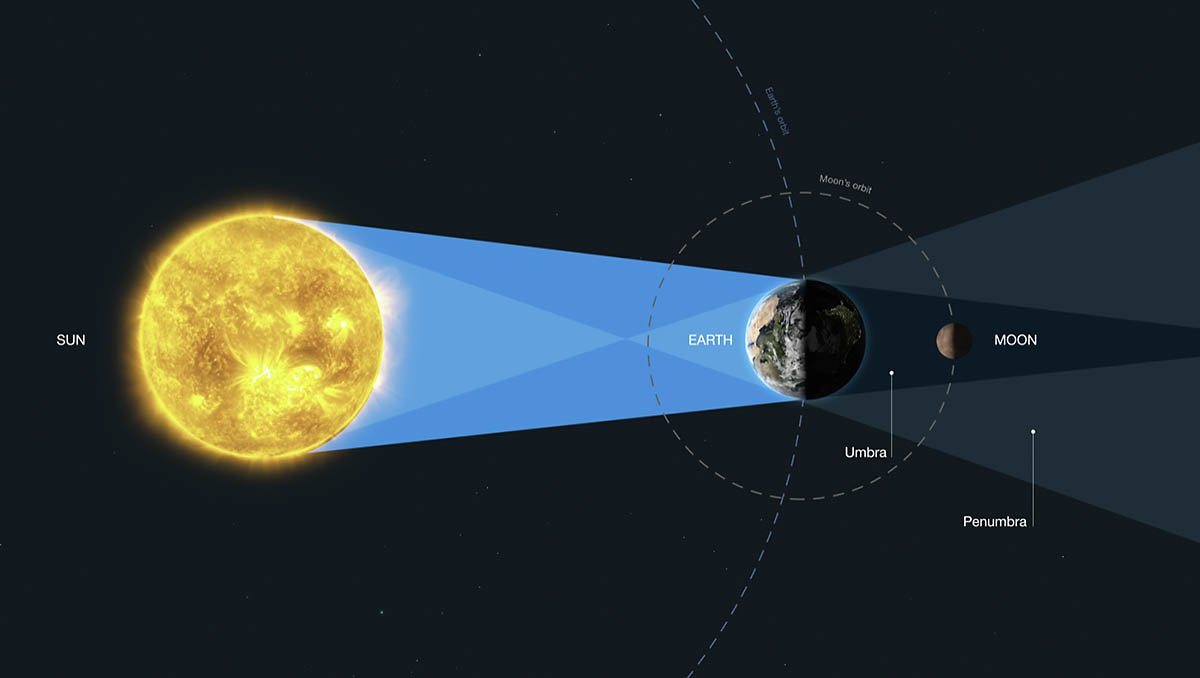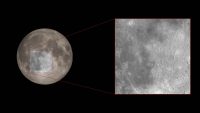This diagram (not to scale) explains the geometry of the lunar eclipse. When the Moon is entirely in the Earth’s umbra (known as a total lunar eclipse or umbral eclipse), all sunlight reaching the lunar surface has been refracted or scattered through Earth’s atmosphere. When the Moon is in Earth’s penumbra (known as a penumbral eclipse), illumination comes from both direct sunlight and sunlight refracted and scattered through the planet’s atmosphere. (M. Kornmesser (ESA/Hubble), NASA, and ESA)
Home This diagram (not to scale) explains the geometry of the lunar eclipse. When the Moon is entirely in the Earth’s umbra (known as a total lunar eclipse or umbral eclipse), all sunlight reaching the lunar surface has been refracted or scattered through Earth’s atmosphere. When the Moon is in Earth’s penumbra (known as a penumbral eclipse), illumination comes from both direct sunlight and sunlight refracted and scattered through the planet’s atmosphere. (M. Kornmesser (ESA/Hubble), NASA, and ESA) This diagram (not to scale) explains the geometry of the lunar eclipse. When the Moon is entirely in the Earth's umbra (known as a total lunar eclipse or umbral eclipse), all sunlight reaching the lunar surface has been refracted or scattered through Earth's atmosphere. When the Moon is in Earth's penumbra (known as a penumbral eclipse), illumination comes from both direct sunlight and sunlight refracted and scattered through the planet's atmosphere. (M. Kornmesser (ESA/Hubble), NASA, and ESA)
This diagram (not to scale) explains the geometry of the lunar eclipse. When the Moon is entirely in the Earth’s umbra (known as a total lunar eclipse or umbral eclipse), all sunlight reaching the lunar surface has been refracted or scattered through Earth’s atmosphere. When the Moon is in Earth’s penumbra (known as a penumbral eclipse), illumination comes from both direct sunlight and sunlight refracted and scattered through the planet’s atmosphere. (M. Kornmesser (ESA/Hubble), NASA, and ESA)




